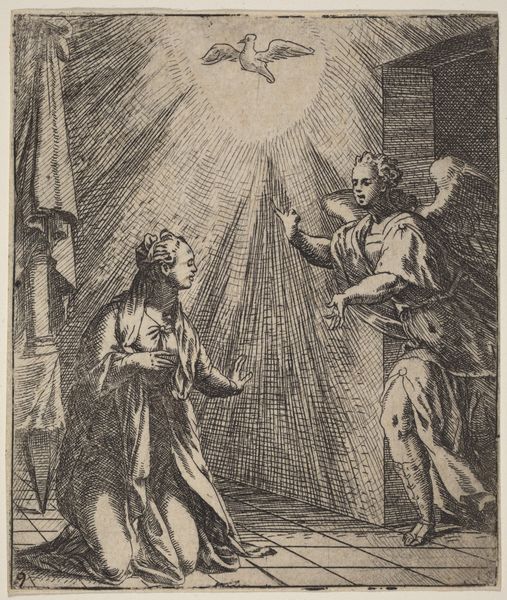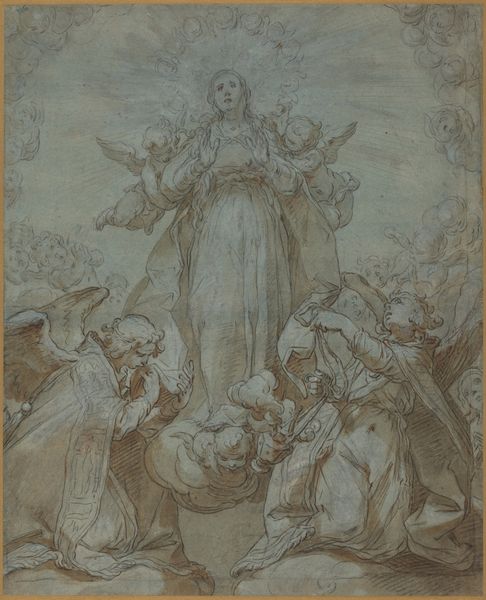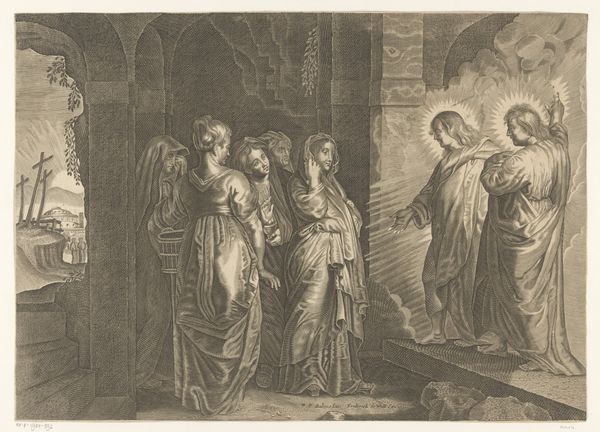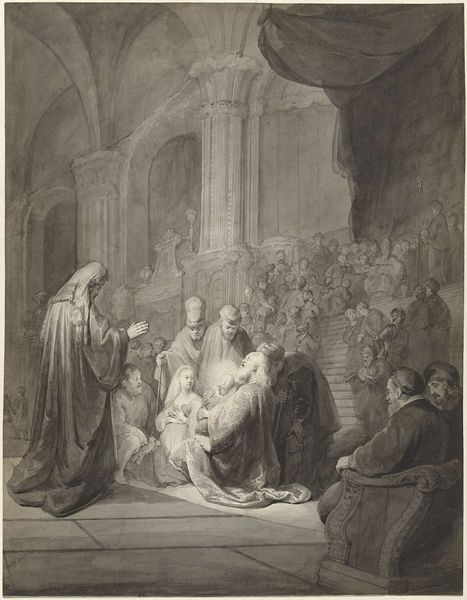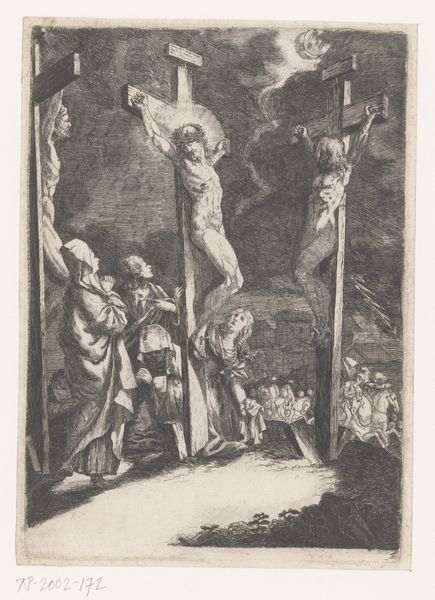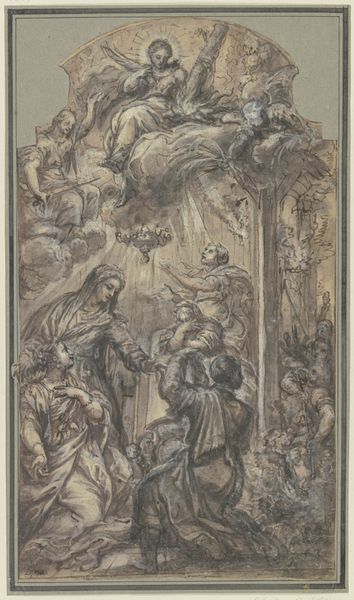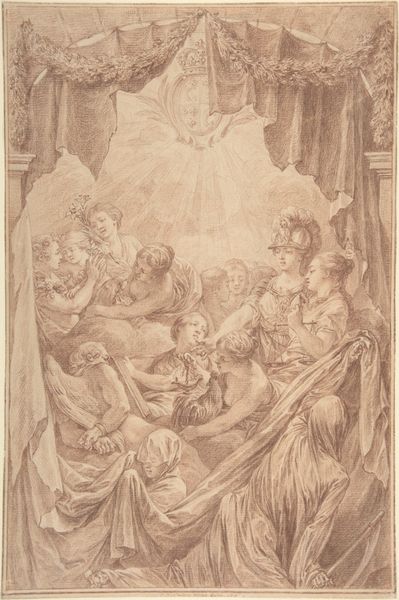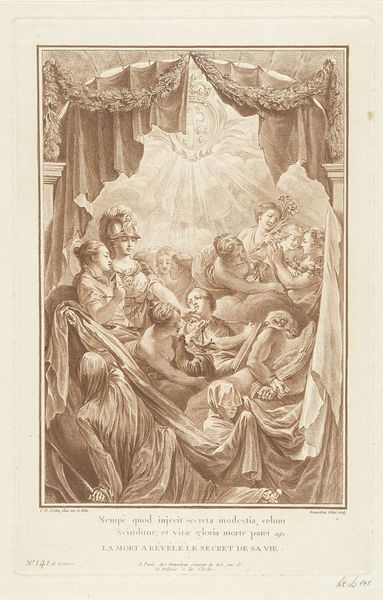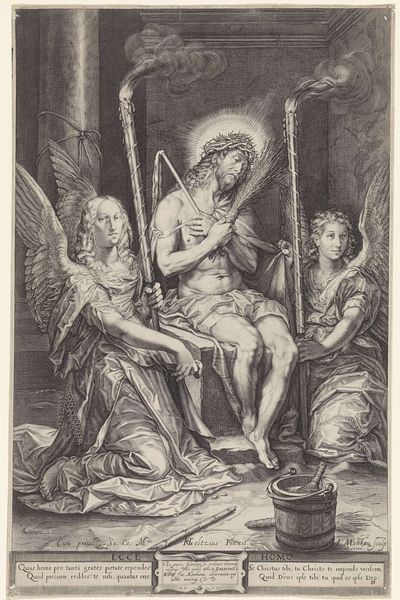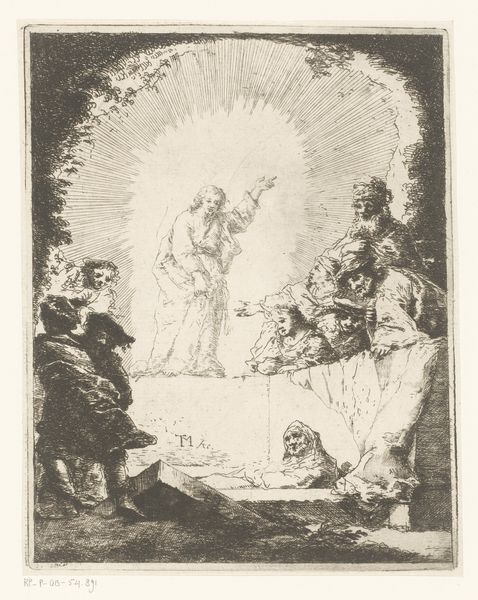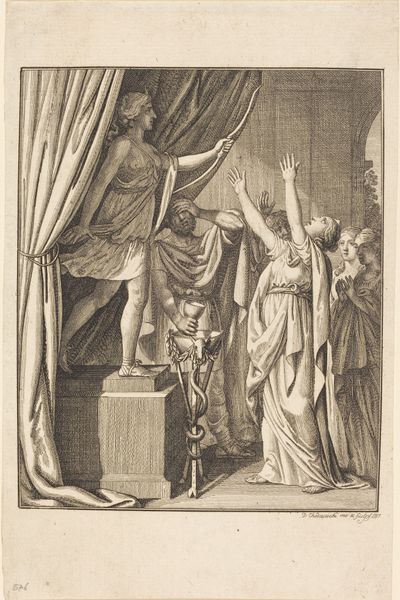
painting, watercolor
#
allegory
#
narrative-art
#
painting
#
painted
#
figuration
#
watercolor
#
orientalism
#
symbolism
#
mixed media
#
watercolor
Copyright: Public Domain: Artvee
Gustave Moreau painted this watercolor, "The Apparition," in the late 19th century, a period marked by France's colonial ambitions and fascination with the 'Orient.' The painting captures a biblical scene where Salome demands the head of John the Baptist. Moreau, steeped in Symbolism, wasn't just illustrating a story; he was exploring the dangerous intersections of desire, power, and femininity. Salome, adorned in jewels, stands as an exoticized figure, her dance having sealed John's fate. The floating head is both a symbol of her power and a grotesque object of her desire. What does it mean to depict a woman as both powerful and monstrous? "I only believe in what I do not see and solely in what I feel," Moreau once said, and this painting feels like a plunge into the subconscious, where the beautiful and the terrible are inseparable. It's a space where we might question how women are represented when they exert agency, particularly in narratives shaped by male perspectives. "The Apparition" lingers in our minds, challenging us to confront the complex ways in which gender, power, and representation collide.
Comments
No comments
Be the first to comment and join the conversation on the ultimate creative platform.
